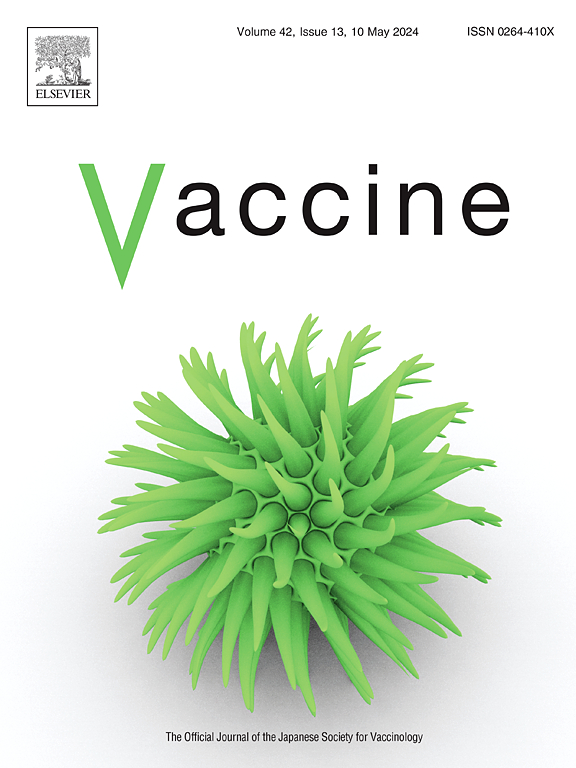Tick-borne encephalitis: Burden of disease and impact of vaccination, Austria (2000–2024)
IF 4.5
3区 医学
Q2 IMMUNOLOGY
引用次数: 0
Abstract
Background
Tick-borne encephalitis (TBE) incidence has increased across Europe in the past decade, even in Austria which has the highest vaccination coverage in Europe. This study investigated the field effectiveness of TBE vaccination using nationwide hospital-based surveillance data (2000–2024), and examined age-specific differences in vaccine effectiveness and disease severity.
Methods
We conducted a retrospective analysis of laboratory-confirmed TBE cases in Austria using nationwide hospital-based surveillance from 2000 to 2024. Annual TBE incidence rates were calculated for populations with regular, irregular, and no TBE vaccination. Vaccine effectiveness was estimated based on relative differences in incidence between vaccinated and non-vaccinated groups. Additionally, the number of cases prevented by vaccination from 2000 to 2024 was estimated, including TBE hospitalizations, severe cases, and deaths.
Results
Among 2260 hospitalized TBE cases, 274 (12 %) occurred in children (1–15 years), 1066 (47 %) in adults (16–59 years), and 920 (41 %) in older adults (≥ 60 years). Severe disease was documented in 1051 (47 %) patients, and 26 (1.2 %) patients died. TBE vaccination provided excellent protection (99 % with regular and > 90 % with irregular vaccination schedules) and prevented more than 10,000 hospitalizations, 4000 severe cases, and 80 deaths between 2000 and 2024. Our data, however, revealed that vaccine uptake and schedule adherence declined over time, coinciding with increasing case numbers in unvaccinated and irregularly vaccinated populations, which resulted in a significant rise in TBE incidence (p < 0.0001).
Conclusions
TBE vaccination substantially reduced disease incidence across all age groups. Sustaining high vaccination coverage and compliance with vaccine recommendations is needed to prevent TBE and reduce healthcare burden.
蜱传脑炎:疾病负担和疫苗接种的影响,奥地利(2000-2024)。
背景:在过去十年中,整个欧洲的蜱传脑炎(TBE)发病率有所增加,即使在欧洲疫苗接种覆盖率最高的奥地利也是如此。本研究利用全国医院监测数据(2000-2024年)调查了TBE疫苗接种的现场有效性,并检查了疫苗有效性和疾病严重程度的年龄特异性差异。方法:我们对2000年至2024年奥地利全国医院监测的实验室确诊的TBE病例进行回顾性分析。计算了定期、不定期和未接种TBE疫苗人群的TBE年发病率。疫苗有效性是根据接种疫苗组和未接种疫苗组之间发病率的相对差异来估计的。此外,还估计了2000年至2024年通过接种疫苗预防的病例数,包括TBE住院、重症病例和死亡。结果:2260例住院TBE病例中,274例(12%)发生在儿童(1-15岁),1066例(47%)发生在成人(16-59岁),920例(41%)发生在老年人(≥60岁)。1051例(47%)患者出现严重疾病,26例(1.2%)患者死亡。脑膜炎疫苗接种提供了极好的保护(99%为定期接种,90%为不定期接种),并在2000年至2024年期间预防了1万多例住院治疗、4000例重症病例和80例死亡。然而,我们的数据显示,随着时间的推移,疫苗的吸收率和计划依从性下降,与未接种疫苗和不定期接种疫苗的人群的病例数增加相一致,这导致TBE发病率显著上升(p结论:TBE疫苗接种大大降低了所有年龄组的疾病发病率。需要保持较高的疫苗接种覆盖率并遵守疫苗建议,以预防TBE和减轻卫生保健负担。
本文章由计算机程序翻译,如有差异,请以英文原文为准。
求助全文
约1分钟内获得全文
求助全文
来源期刊

Vaccine
医学-免疫学
CiteScore
8.70
自引率
5.50%
发文量
992
审稿时长
131 days
期刊介绍:
Vaccine is unique in publishing the highest quality science across all disciplines relevant to the field of vaccinology - all original article submissions across basic and clinical research, vaccine manufacturing, history, public policy, behavioral science and ethics, social sciences, safety, and many other related areas are welcomed. The submission categories as given in the Guide for Authors indicate where we receive the most papers. Papers outside these major areas are also welcome and authors are encouraged to contact us with specific questions.
 求助内容:
求助内容: 应助结果提醒方式:
应助结果提醒方式:


